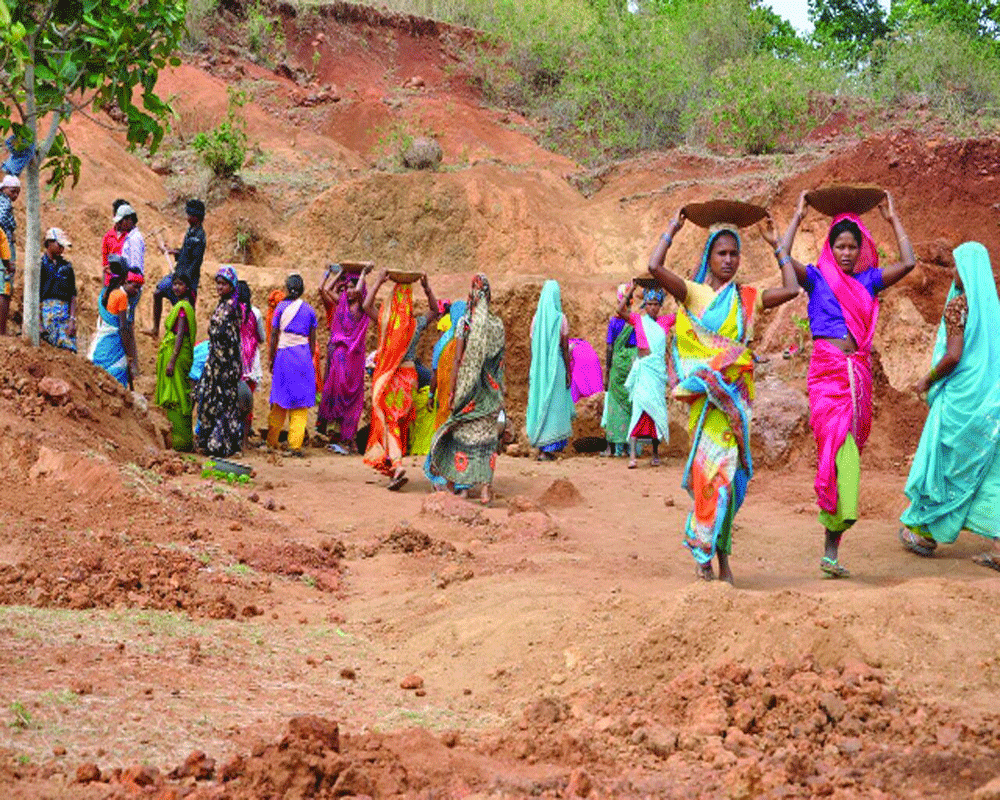The Government must shift the stress to labour-intensive projects; also, all the benefits of economic growth should percolate down to the target groups
Poverty with its penumbra marginalises a nation’s growth and development. Since there’s Hobson’s choice, we must go for its eradication.
Poverty is no longer taken as restricted to economic factors only. A broader view of deprivation indicators of poverty like life expectancy, educational index (years of schooling), standard of living, inequality in distribution of achievement, gender inequality and, lastly, multidimensional poverty index (MPI). MPI states different factors determining poverty beyond income level. Multiple deprivation has manifestations in deprivation and backwardness in health, education and standards of living. It is clear that poverty is (and recognised as) a multidimensional concept based on deprivation.
The Constitution has many provisions which may relate to poverty and its alleviation. While the Preamble mentions the word ‘socialist’ in it, Art 14 (equality before law), Art 21 (protection of life and liberty: life means a life of dignity, not just an animal life), Art 23 (prohibition of traffic in human beings and forced labour) also directly or indirectly touches the issue of poverty. Under Directive Principles of State Policy in the Constitution, Art 38 (social order, welfare of people), Art 39(a) (right to adequate means of livelihood), Art 41 (right to work), Art 42 and Art 43 also touch upon poverty-related issues. But then why after so many years we are still not out of the quagmire of poverty, which has affected the economy, society and all related sectors badly?
A closer look, analysis and understanding would reveal as to which is the right way and thereby we may discern the reason (for our inability also) to wane the effect of poverty. The steps to be taken to alleviate the predicaments of the poverty-stricken may be put into two categories. The two methods can be broadly delineated as prophylactic and curative (in the former, it should be seen that no one from the Above Poverty Line (APL) sinks into poverty trap. This is a way to check aggravation in the living standards of the impecunious.
The steps for preventive methods would include acceleration of economic growth and rapid infrastructure development. Stress on human resource development, proper functioning of public distribution systems and growth of farm/non-farm employment. Agricultural growth also has a direct bearing on the wane in poverty affected conditions. For a long time in the 50s and 60s, many growth models like the Harrod-Domar growth model and Mahalanobis growth model stressed for rapid economic growth and higher rate of capital formation for speedy economic growth. They stressed that rapid economic growth would address the problem. But though the rate of growth in GDP achieved the range of 5.5-6 per cent per annum in 80s and 90s, it could not have a significant impact on poverty reduction and employment generation.
What is the remedy? The remedy as such lies in shifting the stress to labour-intensive projects and it should be further ensured that the benefits of economic growth percolate down to the target groups (those Below Poverty Line). Montek Ahluwalia had stated that agricultural growth and poverty are inversely related. The higher the agricultural growth, the lower the poverty ratio. Punjab and Haryana in the sixties showed the way in this direction. But, of late, increased mechanisation of agricultural operations has affected employment generation in this sector. Nevertheless, agriculture being the mainstay of our economy, steps to ensure growth and development in this sector (in rainfed and water scarcity areas through irrigation) would improve the condition of the small and marginal farmers.
Speedy development of infrastructure would give a thrust to growth with direct impact on poverty alleviation. Moreover, growth of non-farm employment like petty trade, transportation, hinder crafts, dairying etc can have direct impact on poverty eradication. Poor households spend about 80 per cent of their income on food items. Hence, ensuring food security and proper functioning of public distribution system is a must for a frontal attack on poverty. If these methods are seriously and sincerely implemented and monitored, the condition of the poor would steadily improve and pull them out of the poverty trap.
The curative method is more critical and needs massive endeavour to propel people out of the poverty net. Broadly speaking, the steps would include access to sustainable livelihood, universal access to basic social services, provision of socio-economic protection system to support those who cannot support themselves.
Solutions have to be found to tackle region-centric poverty syndrome. While short-term solutions may revolve around antipoverty and employment generation programmes of the Government and their speedy implementation, the long-term policy should take factors like population control, regional problems and fulfilment of minimum needs of the poor into consideration. The need of the hour is for a paradigm shift in the approach to eradicate poverty. Economists (like Nobel laureate Amartya Sen) having stressed the concept of deprivation as the prominent symptom poverty (over and above income and consumption-level calculation), a frontal attack to tackle the deprivation factor of the impecunious may increase the momentum to pull those out from below the poverty line.
(The author is a superannuated senior IAS officer. The views expressed are personal.)


























